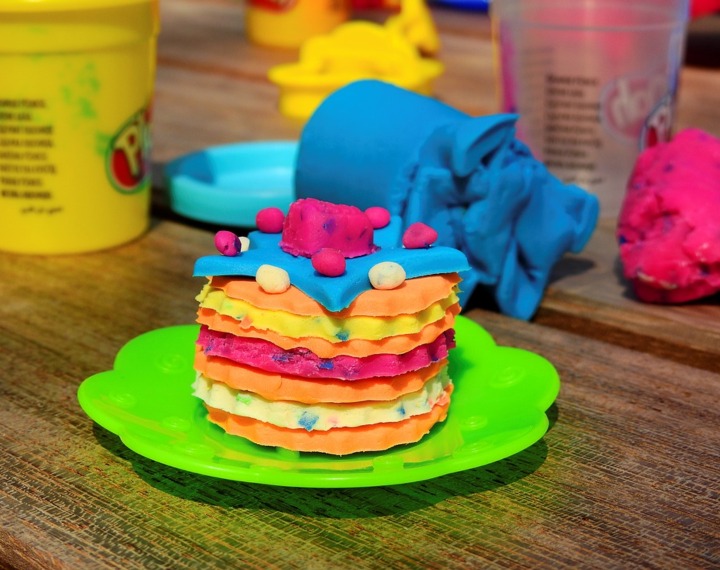Play Dough: A Recipe for Sensory Success
 Everyone knows how much fun play dough can be; it’s a staple toy of almost every childhood. But the question is, can play dough be more than a children’s toy - can it be a therapeutic tool for aiding sensory development?
Everyone knows how much fun play dough can be; it’s a staple toy of almost every childhood. But the question is, can play dough be more than a children’s toy - can it be a therapeutic tool for aiding sensory development?
Studies have shown that play dough can make a fantastic learning and play aid for children (and adults) with all manner of disabilities, from autism to sensory delay. Research has also suggested that it can be a fantastic tool for seniors living with dementia.
Play dough is a fantastic tool and a form of sensory therapy that every care home, special needs children’s school, and respite facility should offer.
What are the benefits of play dough?
Fantastic stress-reliever
Kneading, rolling, flattening and punching the play dough provide the chance to relieve stress and reduce feelings of anxiety and worry, which can lead to children (and adults) with autism and other special needs feeling frustrated and acting out because of these feelings.
By adding scented aromatherapy oils to the play dough, such as vanilla, lavender or rose oil, you can help to make playing with the dough more therapeutic and calming. There are certain scents that are proven to have a relaxing and calming effect when inhaled, which is why using these in your play dough can be such a good idea.
Boosts hand strength
Studies have shown that play dough can also help to refine motor functions, making it a fantastic play aid for helping to boost hand strength, as well as dexterity and coordination. The movement of the hands when playing with play dough boosts hand strength by building muscle. It may take time to make an impact but it is possible to use play dough to increase hand strength, even for children with motor disorders.
The constant movement of the dough helps to increase hand coordination. When the dough is used with play dough tools like rolling pins, scissors, cutters and presses, this helps to improve bilateral coordination - the coordinated use of both hands for specific tasks. Then there is the fact that rolling the play dough between the hands or pinching it to create different shapes can help to aid dexterous function.
Makes a great learning aid
Play dough can be a fantastic tool for facilitating learning, from teaching shapes and numbers to colour and smells, play dough can be a fantastic aid for children and adults alike with special needs. By talking as you use play dough, explaining what you are doing with the dough and why, you can educate children and adults about how to copy you actions. Often, seeing something in action and hearing the process explained can be what it takes to help people with delayed development to learn effectively.
A lot of children learn better by actually doing things with their hands, which is why play dough can be such a great learning aid. Whether you are teaching them about money, food, or mathematics, play dough can act as a fantastic resource and an amazing learning aid.
For multi-purpose learning, such as teaching colour and shapes at the same time, play dough can also work well. Many people with developmental delays struggle to understand certain concepts unless they can see them in action, which is where multi-purpose learning with the use of play dough can be so beneficial.
Acts as a social aid
Research has shown that sensory play using tools like play dough can help to aid social interaction. Many children with autism and other special needs struggle to interact with others, which is what makes play dough such a useful tool.
Because children have to take it in turns using play dough, ask for tools that they need or certain play dough colours, as well as having to share it, this means that it can act as a fantastic social aid.
How easy is play dough to make?
The fantastic thing about play dough is how easy (and affordable) it is to make. While you can purchase pre-made play dough, making it yourself means that you can ensure it’s non-toxic and free from harsh chemicals.
Directions for making play dough:
Ingredients:
250 ml of water
1 TBSP oil (vegetable, coconut or olive works best)
64 g of salt
1 TBSP cream of tartar (this keeps play dough fresh for longer)
64 g flour
Saucepan
Food colouring / Aromatherapy Oil / glitter
How to make:
- Mix the water, oil, salt and cream of tartar, add the food colouring if using, and heat mixture until warm. For play dough with a more exciting look, adding glitter can also be an option worth considering.
- Remove from the heat and add the flour.
- Stir the mixture until it forms a ball, add aromatherapy oil if using, and then knead until smooth.
- Place in an airtight container when not in use.
There you have it, everything that you need to know to use play dough as a fantastic sensory tool for adults and children alike.





